#Carl Benton Reid
Text

Charles Dingle, Dan Duryea, Carl Benton Reid, and Tallulah Bankhead in Broadway’s “The Little Foxes” in 1939.
31 notes
·
View notes
Text

Dana Andrews, Ruth Nelson, Farley Granger, and Carl Benton Reid in a scene of The North Star (1943)
4 notes
·
View notes
Text
The Left Hand of God
The Left Hand of God
The Left Hand of God (1955), starring Humphrey Bogart, Gene Tierney, Lee J. Cobb, Agnes Moorehead, E.G. Marshall
Synopsis of The Left Hand of God
In The Left Hand of God, at a Catholic mission in China, long-awaited “Father O’Shea” proves to be a tough guy, disturbingly attractive to mission nurse Anne.
(more…)

View On WordPress
#1955#Agnes Moorehead#Carl Benton Reid#Catholic#E. G. Marshall#Gene Tierney#Humphrey Bogart#Impersonation#Jean Porter#Lee J. Cobb
2 notes
·
View notes
Text



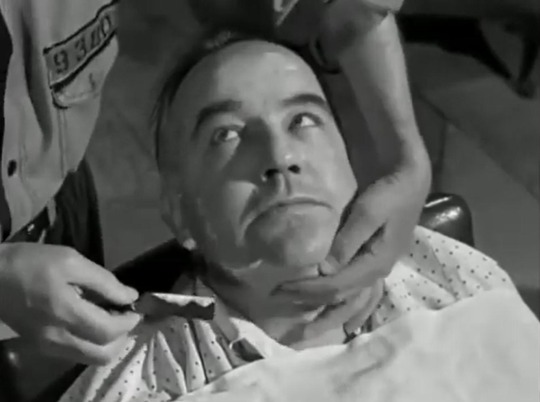
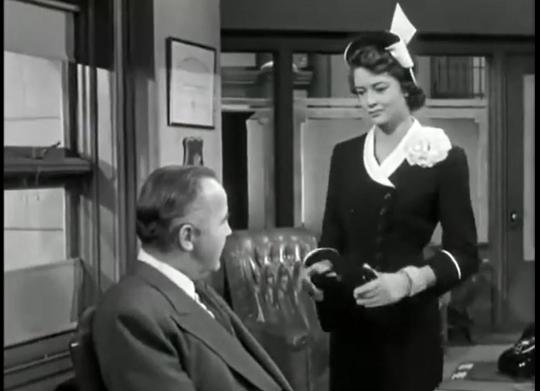


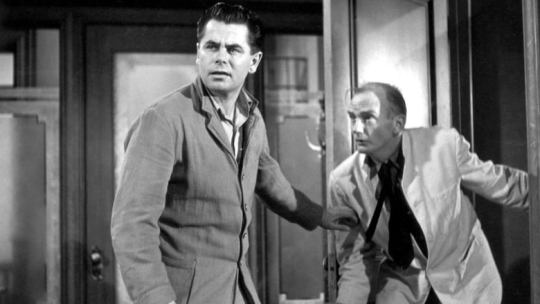
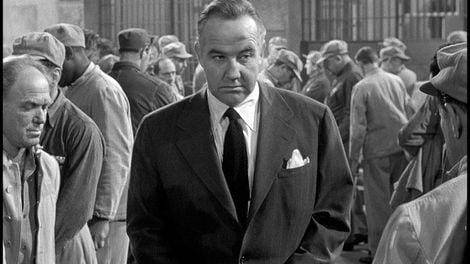

Convicted (1950)
"Will you tell me what all the fuss is about? I had a few drinks and I hit a guy. It happens every day."
"You know who the boy was?"
"No, I'd never seen him before."
"Anyone told you he died this morning? Not just a bar room brawl now, Joe. A man is dead, you did it."
"Well, it... it was just an accident."
"He's still dead."
#convicted#1950#film noir#american cinema#henry levin#martin flavin#william bowers#fred niblo jr.#seton i. miller#glenn ford#broderick crawford#millard mitchell#dorothy malone#carl benton reid#frank faylen#will geer#martha stewart#henry o'neill#douglas kennedy#roland winters#ed begley#george duning#Columbia's third attempt at adapting Flavin's play‚ The Criminal Code‚ and it's solid enough i suppose. the casting of genre heavyweights#Ford and Crawford is the real win‚ and they're both great in this as prisoner and warden. the only fault i suppose is a failure to commit#to the anti prison sentiment which is teased in a few scenes. there's exactly one strong critical moment‚ as Crawford's daughter explodes#at him and accuses him (rightly) of torture. but elsewhere the film is a little too safe and careful. likewise some attempted humour#(although pretty effective) feels questionable within the context of its place in a film of this kind and with this subject#idk. i enjoyed this a lot‚ actually‚ but that was almost entirely down to the casting and some strong performances#i am very eager to see the earlier adaptation‚ Howard Hawks' The Criminal Code (not least bc it co stars Boris Karloff!)
2 notes
·
View notes
Text
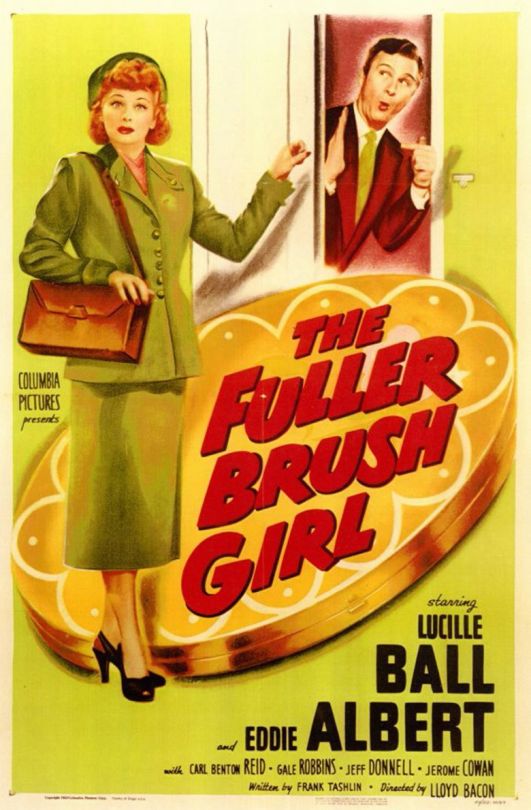
#The Fuller Brush Girl#Lucille Ball#Eddie Albert#Carl Benton Reid#Gale Robbins#Jeff Donnell#Jerome Cowan#Lloyd Bacon#1950
1 note
·
View note
Text
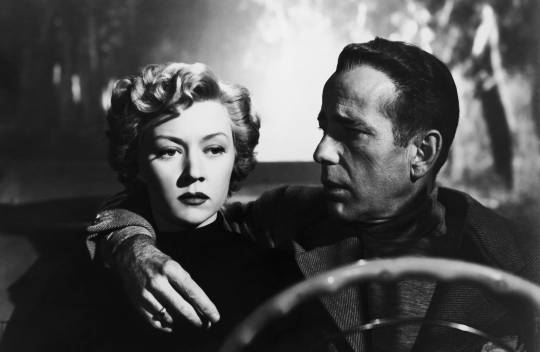
Gloria Grahame and Humphrey Bogart in In a Lonely Place (Nicholas Ray, 1950)
Cast: Humphrey Bogart, Gloria Grahame, Frank Lovejoy, Carl Benton Reid, Art Smith, Jeff Donnell, Martha Stewart, Robert Warwick, Morris Ankrum, William Ching, Steven Geray, Hadda Brooks. Screenplay: Andrew Solt, Edmund H. North, based on a story by Dorothy B. Hughes. Cinematography: Burnett Guffey. Art direction: Robert Peterson. Film editing: Viola Lawrence. Music: George Antheil.
The "lonely place" is Hollywood, where Dixon Steele (Humphrey Bogart) is a screenwriter with a barely held-in-check violent streak. This celebrated movie contains one of Bogart's best performances, though it looks and feels like the low-budget production it was. Bogart's own company, Santana, produced it for release through Columbia, instead of Bogart's employer, Warner Bros., which may explain why, apart from Bogart and Gloria Grahame, the supporting cast is so unfamiliar: The best-known face among them is Frank Lovejoy, who plays Bogart's old army buddy, now a police detective. In a Lonely Place seems to be set in a different Hollywood from the one seen in the year's other great noir melodrama, Billy Wilder's Sunset Blvd. There are no movie star cameos and glitzy settings in the Bogart film. What this one has going for it, however, is a haunting, off-beat quality, along with some surprising heat generated between Bogart and Grahame, who plays Laurel Gray, a would-be movie actress with an intriguing, only partly glimpsed past that hints at a sapphic subtext. She has, for example, a rather bullying masseuse (Ruth Gillette), who seems to be a figure out of this past. In fact, the whole film is made up of enigmatic figures, including Steele's closest friends, his agent, Mel Lippman (Art Smith), and an aging alcoholic actor, Charlie Waterman (Robert Warwick). Both of them stick with Steele despite his tendency to fly off the handle: He insults and at one point even slugs the agent, while at another he defends the actor with his fists against an insult. Though the central plot has to do with Steele's being suspected of murdering a hat-check girl (Martha Stewart) he brought to his apartment to tell him the plot of a novel he's supposed to adapt, the film is less a murder mystery than a study of a damaged man and his inability to overcome whatever made him that way. And despite the usual tendency of Hollywood films to end with a resolution by tying up loose ends, In a Lonely Place leaves its characters as tensely enigmatic as they were at the start -- perhaps even more so.
5 notes
·
View notes
Video
youtube
👀The Pied Piper Of Hamelin (1957) | Van Johnson | Claude Rains | Lori Nelson
The 1957 Pied Piper of Hamelinvmovie is an American musical film which is based on the well-known poem of the same name written by Robert Browning. The movie stars Van Johnson, Claude Rains (which is his only singing and dancing role), Lori Nelson, Jim Backus and Kay Starr. CAST: Van Johnson as Pied Piper / Truson Claude Rains as Mayor of Hamelin Lori Nelson as Mara Jim Backus as King's Emissary Kay Starr as John's Mother Doodles Weaver as the Mayor's Councillor Stanley Adams as the Mayor's Councillor Carl Benton Reid as the Hamelout Mayor Oliver Blake as Leading Villager Amzie Strickland as Leading Townswoman Rene Kroger as Paul Brian Corcoran as John You are invited to join the channel so that Mr. P can notify you when new videos are uploaded, https://www.youtube.com/@nrpsmovieclassic
0 notes
Text
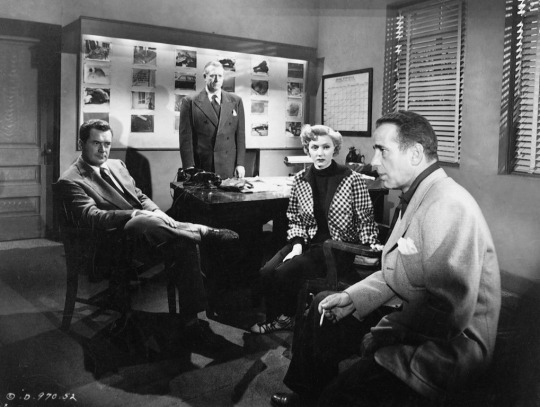
Frank Lovely, Carl Benton Reid, Gloria Grahame, and Humphrey Bogart in Nicholas Ray’s In a Lonely Place (1950)
1 note
·
View note
Photo




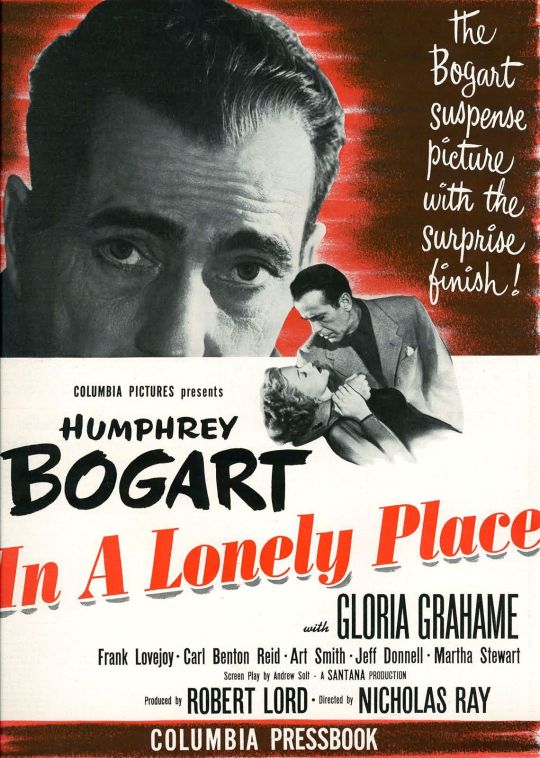





In a Lonely Place (1950) Nicholas Ray
November 6th 2021
#in a lonely place#1950#nicholas ray#humphrey bogart#gloria grahame#art smith#frank lovejoy#jeff donnell#carl benton reid#martha stewart#robert warwick#behind the mask#late at night#favourite
46 notes
·
View notes
Photo


#carl benton reid#sidney poitier#pressure point#1962#**myedits:gif**#**carlbentonreid#**sidneypoitier#**pressurepoint#1960s#gif warning
28 notes
·
View notes
Text
"ESCAPE FROM FORT BRAVO" (1953) Review
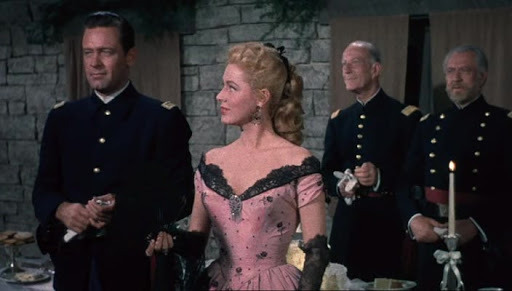
"ESCAPE FROM FORT BRAVO" (1953) Review
Years ago, I used to watch a great deal of old movies on late night television. My two favorite channels that offered these movies were Turner Network Television (TNT) and the American Movies Classic (AMC), which used to air movies without any commercial breaks. On TNT, I had stumbled across a Western movie originally released by MGM Studios in 1953 called "ESCAPE FROM FORT BRAVO" (1953) and fell in love with it. After watching my recently purchased DVD copy of the movie, I could see why it became a favorite of mine.
Directed by John Sturges during the first decade of his directorial career, "ESCAPE FROM FORT BRAVO" told the story of a Union Army officer that served as the second-in-command of a prisoner-of-war camp located in the Arizona Territory in 1863. The movie’s opening pretty much set the stage of what kind of character Captain Roper was, as it depicted him dragging an escaped Confederate prisoner back to Fort Bravo. The fact that Roper was on horseback and his prisoner – a Lieutenant Bailey – was on foot pretty much established the Union officer as a hard-nosed and ruthless man. That flint-like personality was exacerbated by his cynicism, revealed in his reactions to the other characters’ disapproval of his treatment of Bailey. However, chaos soon arrived in the form of one Carla Forrester, a Texas belle who arrived at Fort Bravo to serve as maid-of-honor at the wedding of Alice Owens, the daughter of Fort Bravo’s commanding officer, Colonel Owens. Carla was also there to ensure the escape of the prisoners’ ranking officer, her fiancé Captain John Marsh and a few of his men. In order to keep their Union jailers distracted, Carla set out to seduce and romance the fort’s most feared man – Captain Roper.
When I first saw "ESCAPE FROM FORT BRAVO", I never thought I would become such a diehard fan of the movie. Do not get me wrong. It was not the best or innovative Western I had ever seen. Screenwriters Frank Fenton and an unaccredited Michael Pate had created a solid character study about conflicts – both political and personal – between the Union and Confederate troops in the Civil War Southwest, and the conflict between the Apaches and everyone else. The movie even had a happy ending – somewhat. Yet, Sturges, Fenton and Pate managed to lift a solid tale into something more fascinating by infusing a great deal of emotion and complexity in the main characters And it were these complex characters that truly made "ESCAPE FROM FORT BRAVO" for me. The characters seemed to seethe with an array of emotions that eventually burst forth as the movie unfolded. Many of these emotions seemed to center around the story’s main character.
One of those characters happened to be Carla Forrester. And Eleanor Parker managed to do a top-notch job in portraying the bundle of contradictions that simmered underneath her ladylike façade. Parker portrayed Carla as a cool Southern belle with impeccable manners and a talent for seduction. Her Carla also possessed the ruthlessness to browbeat a reluctant pro-Southern storekeeper into helping Marsh and his men escape; a boldness that allowed her to chase after Roper in an age where women were valued for being passive; and a great deal of passion for Marsh and later, Roper. One of the more interesting aspects of Parker’s performance was expessing Carla’s struggles to suppress her feelings for Roper. Recently, I learned that Parker had earned the nickname Woman of a Thousand Faces. Judging from her portrayal of Carla Forrester, I would say that she deserved the name.
I have been a fan of John Forsythe since his years as Charlie Townsend’s voice in "CHARLIE’S ANGELS" (1976-1981) and his work on the ABC nighttime soap opera "DYNASTY" (1981-1989). But I must admit that I found his performance in "ESCAPE FROM FORT BRAVO" somewhat perplexing. On one hand, Forsythe did a excellent job in portraying John Marsh’s patience, intelligence and slightly caustic nature - especially in scenes that featured Marsh's exchanges with his fellow Confederate prisoners. However, there seemed to be something not quite . . . right about the character. I do not know if the fault lay with Forsythe’s performance or Fenton and Pate’s screenplay. The problem with the Marsh character or Forsythe’s acting seemed to be Marsh’s successful ability to suppress his emotions. There were times when I wondered if the only true feelings that Marsh seemed able to truly express, centered around his desire to escape. And when he finally did express his his jealousy toward Carla’s feelings about Roper – it came off as slightly unconvincing. Either Forsythe had failed to sell it . . . or Fenton and Pate failed to allow Marsh to express his jealousy until it was too late in the story.
I certainly cannot accuse William Demarest and William Campbell for giving unconvincing performances. The pair portrayed two of the Confederate prisoners – the wise "old" man Sergeant Campbell and the cocky young Cabot Young. The pair seemed to be engaged in some kind of verbal warfare that I found a lot of fun. Yet, it also seemed to hint some kind of mild dislike between the two – until the ending revealed their true feelings for each other. Two other performances caught my attention – John Lupo as the cowardly Confederate officer Lieutenant Bailey and Richard Anderson (of "THE SIX MILLION DOLLAR MAN" and "THE BIONIC WOMAN" fame) as the soon-to-be husband of Alice Owen, Lieutenant Beecher. What made these two characters interesting was that each man – in his own way – seemed capable of some kind of courage. Although a physical coward, Bailey possessed the courage to openly admit his limitations. And Beecher had no qualms about openly expressing his disapproval of Roper’s ruthlessness, despite being the captain’s subordinate.
While writing this review, it occurred to me that I had yet to comment on William Holden’s performance as the hard-nosed Captain Roper. The same year (1953) that MGM released "ESCAPE FROM FORT BRAVO", Paramount released Billy Wilder’s movie, "STALAG 17" - the movie that featured Holden’s Oscar winning performance. If I had my way, I would have given Holden the Oscar for his performances in both movies. What I found amazing about his portrayal of Roper is that in the hands of a lesser actor, the character could have easily ended up one-dimensional. Ironically, most of the supporting characters seemed to view him as a one-dimensional hard ass. Yet, Holden managed to effectively convey Roper’s complexity by perfectly balancing the character’s ruthlessness with an intelligent, witty and passionate man. In the end, he actor did a superb job in combining the many aspects of Roper’s personality into a complex and interesting character.
MGM’s Oscar winning costume designer Helen Rose added color to the movie with some lush costumes befitting the movie’s early 1860s setting. Unfortunately, Rose made one serious misstep with a yellow evening gown worn by Eleanor Parker:
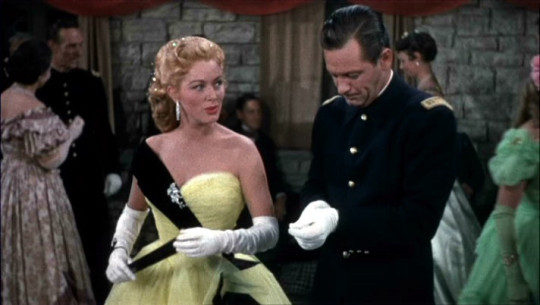
The gown seemed more befitting of a movie set in the early 1950s, instead of the 1860s. It is not surprising that Rose had received her Oscar nominations and wins for movies in a modern setting. I also have to commend cinematographer Robert Surtees for capturing the Southwest landscape (Southern California and New Mexico) without overwhelming the performers. Surtees also made use of the Ansco cameras to give the movie a rich and lush aura, allowing the desert to seem more colorful than usual.
Surprisingly, Frank Fenton and Michael Pate’s script for "ESCAPE FROM FORT BRAVO" seemed to bear a small, yet striking resemblance to John Ford’s 1939 classic, "STAGECOACH". Both movies are basically character studies of a group of people in a Western setting – namely the Southwest – that included action against the Apaches in the final acts. And the Apaches in both films proved to be nothing more than plot devices to drive the characters’ situations forward. However, Sturges and the two screenwriters gave the Apaches’ roles a twist by portraying them as an organized military unit, instead of a bunch of rampaging "savages", during a sequence that featured Roper, Carla, Beecher, Marsh, Bailey, Campbell and Young under besiege by the Apaches’ "bombardment" of arrow similar to Henry V’s use of English and Welsh longbowmen at the Battle of Agincourt. And unlike the John Wayne and Claire Trevor characters in "STAGECOACH", this movie left the fate of Roper and Carla’s future romance in the air. After all, she had assisted in the Confederates’ escape.
It is a shame that "ESCAPE FROM FORT BRAVO" has never been considered when top Hollywood Westers are discussed. Or even when John Sturges’ career is discussed. Frankly, I believe the movie deserves to be considered. Sturges had taken Frank Fenton and Michael Pate’s sharp screenplay and a top notch cast to create a tense and complex Western that I feel is one of the best I have seen to come out of the Hollywood studio era.

#escape from fort bravo#old west#old hollywood#period drama#period dramas#costume drama#civil war#civil war movies#John Sturges#william holden#eleanor parker#john forsythe#william demerest#william campbell#richard anderson#carl benton reid#john lupton#helen rose#polly bergen#alex montoya
8 notes
·
View notes
Text

Carl Benton Reid (August 14, 1893 – March 16, 1973)
9 notes
·
View notes
Text
Athena (1954)
Athena (1954)
RICHARD THORPE
Bil’s rating (out of 5): BBB
USA, 1954. Metro-Goldwyn-Mayer. Screenplay by William Ludwig, Leonard Spigelgass. Cinematography by Robert H. Planck. Produced by Joe Pasternak. Music by George Stoll. Production Design by Cedric Gibbons, Paul Groesse. Costume Design by Walter Plunkett, Helen Rose. Film Editing by Gene Ruggiero.
A conventional love story about opposites attracting is…

View On WordPress
#Carl Benton Reid#Cecile Rogers#Cedric Gibbons#Debbie Reynolds#Dolores Starr#Edmund Purdom#Evelyn Varden#Gene Ruggiero#George Stoll#Helen Rose#Henry Nakamura#Howard Wendell#Jane Fischer#Jane Powell#Joe Pasternak#Kathleen Freeman#Leonard Spigelgass#Linda Christian#Louis Calhern#Metro-Goldwyn-Mayer#Nancy Kilgas#Paul Groesse#Ray Collins#Richard Sabre#Richard Thorpe#Robert H. Planck#Steve Reeves#Vic Damone#Virginia Gibson#Walter Plunkett
0 notes
Photo

Carl Benton Reid, Dan Duryea and Charles Dingle in
The Little Foxes (1941)
Director: William Wyler
#Carl Benton Reid#Dan Duryea#Charles Dingle#The Little Foxes#1941#William Wyler#Black and White Films#Classic Hollywood#American Films#RKO Pictures#Samuel Goldwyn Company#Films of the 1940s#1940s
8 notes
·
View notes

